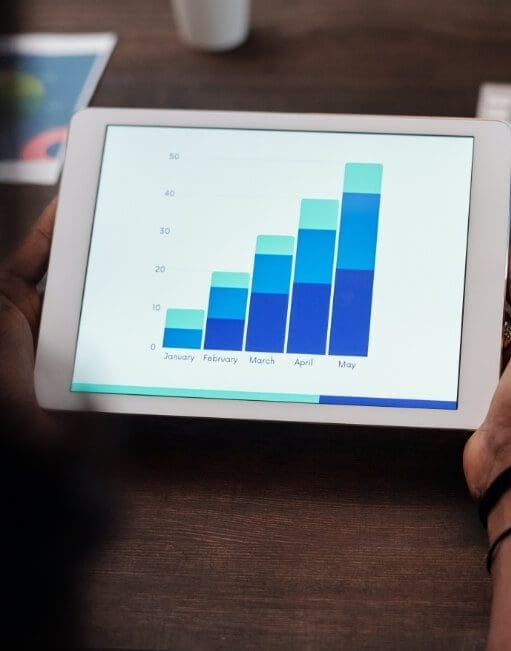At the heart of almost every content strategy is a blog. It may not be called a blog, in fact often it will be separated into a standalone sub-brand, but having a home for your content on a domain or subdomain that you own is essential to almost every content strategy.
Blogging can be a powerful tool in your business’s digital content marketing strategy. It can help drive traffic, engage customers, establish authority, and provide thought leadership. Other benefits include:
Your blog is one of only a small number of assets you actually own. Many brands place their content emphasis almost entirely on social media, but the danger is that you don’t own those platforms, so if Facebook increases their advertising costs to unviable levels or Twitter disappears, your investment of time and money has come to nothing. Your blog and all the content on it, on the other hand, is 100% yours.
Blog posts aid SEO. Google wants to provide the best content from the most trusted brands. By having a blog that’s well produced and structured you not only increase the range of keywords for which your site can be found, but you can improve the engagement, link and brand signals to Google that determine your rankings
Your blog will provide content for all other channels. One of the golden rules of content marketing is to create once, distribute everywhere. Each blog post forms the basis of content that can then be reshaped for all social channels and email. This ensures efficiency and consistency in messaging.
Through insightful and informative blog posts, you can establish yourself as an industry expert. Sharing valuable knowledge showcases your expertise, fostering trust and credibility among your audience, which can lead to increased customer loyalty and engagement.
Blog posts have a longer shelf life compared to some other forms of content. Over time, they can continue to drive traffic, provide value, and contribute to your overall digital marketing efforts.
To ensure your blog contributes significant value to your broader digital marketing strategy, there are some key strategy considerations that you’ll want to think about:

Identify your business’s goals for the blog. You may want to increase website traffic, generate leads, improve brand awareness, or showcase expertise in a specific niche. You also need a deep understanding of your target audience and the questions they may have about your business/industry to ensure you’re creating content that has value for them.

Plan a content calendar with topics that align with the business’s goals and target audience’s interests. Your calendar should incorporate a mix of informative, educational, entertaining, and promotional content. Consider using keyword research to optimise blog posts for search engines.

Establish a regular publishing schedule (e.g., weekly or bi-weekly) to maintain readers’ interest and keep the blog fresh. Ensure that you stick to the schedule, and be consistent in delivering quality content.

Write high-quality blog posts that offer value to the readers. Use storytelling, visuals, and multimedia to make the content engaging and shareable. Always make sure you directly address the pain points of your target audience, and provide them with solutions.

Share your blog posts on social media platforms to reach a wider audience. Utilise email marketing to notify subscribers about new blog posts. Collaborate with influencers or other blogs to amplify reach.

Use web analytics tools to track the performance of blog posts. Analyse data to understand which posts perform well and resonate with the audience, and use insights to refine your content strategy and improve future blog posts.
Frequently Asked Questions about Blogging
Aim for consistency. It’s better to publish quality content regularly, such as once a week or bi-weekly, rather than irregularly. Find a publishing schedule that suits your resources and stick to it.
Create content that addresses your target audience’s pain points, educates them, and offers solutions. Mix informative articles, how-to guides, industry insights, case studies, and engaging stories related to your products or services.
Promote your blog through social media channels, email newsletters, collaborations with influencers or other blogs, and internal links on your website. Engage with your audience and encourage sharing.
Yes, blogging can generate leads by attracting potential customers with valuable content and using effective calls-to-action (CTAs) in your posts to guide them towards relevant offers or sign-ups.
Use web analytics tools to track metrics such as website traffic, time spent on page, bounce rate, and conversion rates. Monitor engagement through comments, social shares, and leads generated from the blog.
No matter what sector you’re in, we believe that the fundamentals of great marketing never change
From your website user experience to the user imagery within your social media, brand is every moment of every interaction with your business. Defining who you are.
Get your content right, and the channels will all but take care of themselves. It is not enough for content to be superficially on-brand, but rather it must drive the brand’s vision, no matter how ambitious.
It’s no coincidence that the best B2B marketers are endlessly curious individuals who understand the value of research. I’s where every great strategy begins.
There is no better way of capturing incredible B2B or professional service content whilst simultaneously raising awareness and growing credibility, than by engaging with the top 1% of your target market; the influencers.
From SEO to email marketing and webinars to social media, your content needs to be distributed across all the relevant channels as you develop brand into a serious digital asset. Meanwhile, a paid lead generation strategy that limits cost per acquisition (CPA) may also be required, depending on short term targets.
In order to avoid “analysis paralysis”, a small number of headline metrics at both brand and commercial levels should be agreed upon, along with the frequency of updates. We typically find that weekly mini-reports ensure constant momentum without disrupting day to day activity.
Our team care about two things – doing brilliant work and making an impact. That’s why we’re directing every free moment to helping the
Contact us today for a free consultation to drive change and grow your market share.
"*" indicates required fields




© BOSS DIGITAL All rights reserved | Privacy Policy
We use cookies to ensure that we give you the best experience on our website. If you continue to use this site we will assume that you are happy with it. Read more in our Privacy Policy.